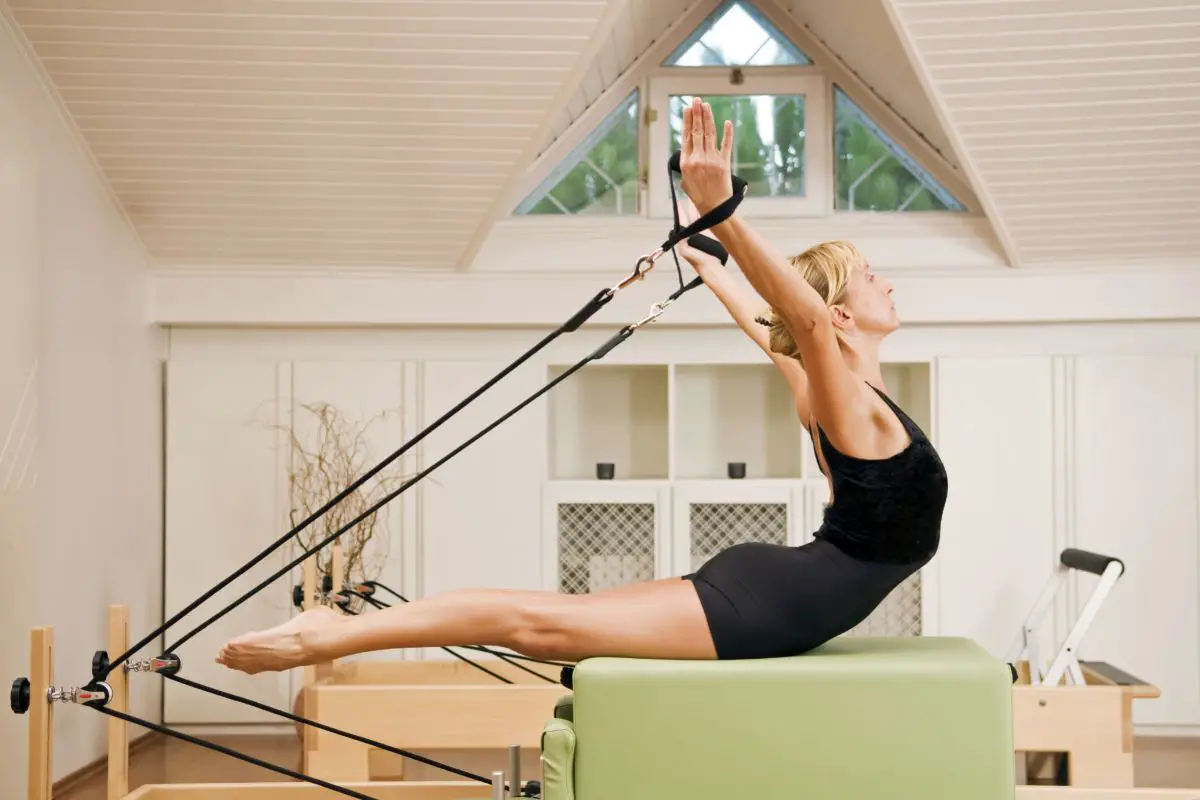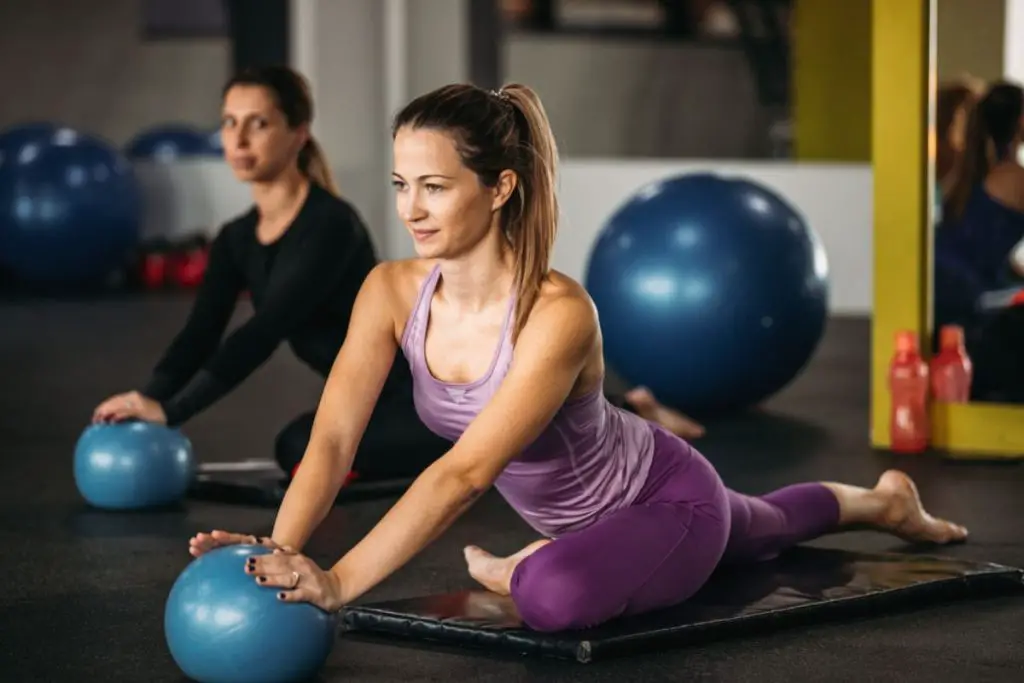Pilates: Types, Benefits, Side Effects, and Precautions
Your fitness level can make a huge difference to your well-being, so it’s important to find a form of activity that you enjoy, makes a difference, and can be performed safely.
If you want to improve your strength, flexibility, and balance, you may want to consider doing Pilates.
Pilates is a low-impact form of activity that has been around since the 1920s, but it has become very popular over the last few decades.
Some of the benefits of Pilates are increasing lean muscle mass and improved posture.
Pilates involves several movements that are similar to yoga moves, calisthenics, and ballet.
These exercises work all of the muscle groups, but a lot of the movements focus on increasing core strength.
As the movements are so gentle, Pilates can generally be done by a large range of ages and fitness experience levels.
Despite this, some individuals should take precautions before beginning this activity, as there is always a risk of injury with exercise.
You’ll learn more about Pilates in this post, including its health benefits, possible side effects, and precautions that you should consider before taking it up.
Pilates Basics
Pilates is named after the founder, Joseph Pilates, a German athlete who created the fitness form in 1923.
Pilates originally aided non-ambulatory World War 1 troops to regain movement through their bed springs.
After medical providers found that these individuals recovered faster following the activities, Pilates then began to help dancers and athletes restore their fitness after injury.
Around 50 years later, Pilates, as an activity form, started to become more popular around the globe.
Pilates involves around 50 exercises that improve mental and physical condition. The moves are established on these five fundamentals:
- Activating deep core muscles
- Hip mobility
- Chest and shoulder stabilization
- Neck alignment
- Steady and regular breathing patterns
Pilates And Its Benefits
Research has shown that Pilates has many benefits.
These are both preventative and restorative, allowing you to improve your fitness level and avoid future health issues.
Here are some of the most significant Pilates benefits:
Improves Core Strength
Pilates is known for its attention to core workouts. The core is the body’s center where all movement originates from.
It consists of all of the muscles in the trunk which support and balance the frame.
Increasing core strength is important to decrease hip and back pain, improve pelvic floor strength, and perform explosive movements.
Helps Your Posture
Weaker muscles, back and shoulder pain, and headaches are all symptoms of poor posture.
Good posture involves standing or sitting up tall with no difficulties.
Pilates concentrates on the body’s alignment, balancing the muscle groups, and the range of motion surrounding the joints.
It can make you more aware of your muscle strength and alignment, improving your posture in the process.
Prevents Future Injuries
Pilates improves muscle tone, ensuring that they aren’t too tight, loose, weak, or rigid.
Poor muscle tone can increase your risk of injury.
Pilates movements increase your dynamic strength, allowing you to balance and support your joints as you move.
Studies have also shown that Pilates can help lower the risk of injury while playing sports.
Improves Back Pain
Pilates aims to work the pelvic floor and the deeper muscles in the core.
The movements make these muscles release and contract, which is an indication of strength.
These muscle areas act as a brace, helping to support and raise the organs to balance and shield the back.
Improves Stress Levels

Pilates involves focusing on a regular breathing pattern. This inward attention to your breath can help manage the nervous system.
This helps you move out of a stressful, fight-or-flight mode, decrease cortisol, and gradually lower stress levels.
Increases Mobility And Flexibility
Flexibility is how much your muscles can passively stretch. Mobility is different, as this is the range of motion around your joints.
Mobility is important, so you should work towards it. Improving your mobility involves a good balance of flexibility and strength.
Consistently performing Pilates involves constant movement and controlled actions.
Rather than stretching following a strengthening form of activity, Pilates blends the two.
This increases your mobility, strength, and flexibility.
Increases Immunity
Studies have shown that Pilates can increase your immune levels by enhancing the immune system, particularly in older individuals.
Even though most of these studies use older participants, the results may indicate that Pilates helps all ages increase their immunity, thanks to better blood circulation.
Blood circulation and the immune system are linked.
Improved lymph and blood flow help to improve the immune system, and Pilates supports both of these elements.
Better Balance
Balance is important for all ages.
Poor balance can make everyday tasks harder, like walking, coordination, or simple movements, like twisting or reaching above.
Pilates involves whole-body movements that help strengthen the core and improve your alignment, improving your gait and balance as a result.
Makes Your Bones Stronger
The modern lifestyle involves sitting more and moving less, which are both damaging to our well-being and bone density.
Having strong bones helps to avoid osteoarthritis and osteoporosis.
These conditions don’t just affect older individuals, they can happen to anyone of any age.
Research has shown that Pilates can help soothe pain, improve quality of life, and improve bone density.
Pilates And Potential Side Effects
Pilates is a low-impact form of exercise, which is why the risk of injury is so low.
In most cases, there aren’t many side effects related to Pilates, particularly if you have a certified and experienced instructor.
Despite this, there are still some things you should consider.
- If your fitness level is low, or you are a complete beginner to exercise, you might notice some symptoms when you first start Pilates. These include tiredness, muscle aches, sore sensations, and pain in the lower back. Fortunately, if you are consistent, don’t rush progress, and learn from an experienced instructor, these symptoms should soon resolve themselves.
- Pilates is low impact, so it isn’t the best form of activity if weight loss is your main goal. If you are prioritizing weight loss, practice Pilates with cardio forms of activity.
- Most people can afford the cost of a Pilates mat, but a reformer is an expensive piece of equipment that is hard to store away. Reformer classes might cost more than mat Pilates ones, and you can always find mat Pilates videos online to practice at home.
Pilates Safety Precautions To Consider
Pilates may be thought of as a generally safe activity, but you should always consult your doctor before starting, especially if you relate to the following points:
- Are overweight or obese
- Are 45 years or above
- Are pregnant
- Have underlying medical issues, like coronary disease
- Have had surgery recently
- Are recovering from any injuries
Whether you are attending Pilates class or practicing an at-home video, make sure that the teacher is fully certified and trained.
Inexperienced trainers won’t be able to demonstrate the correct form, putting you at risk of injury in the process.
Final Thoughts
Pilates has many health benefits, and as it is a low-impact activity, can be practiced by a range of ages, fitness levels, and sizes.
Adding Pilates to your exercise routine can help improve your well-being, both physically and mentally.
If you want to get stronger, improve your balance, and feel better, Pilates will make a big difference to your health and fitness levels.





